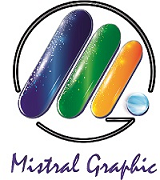Use of retroreflective ink
Product introduction
Theory:
As part of retroreflection technology in a glass micro-bead system, light is reflected from the bottom and returned to its source.
Visualization of the retroreflective effect:
The print should be placed on a wall at a distance of about 5 to 8 m from a point light source (lamp, halogen, window, …) and to be positioned at the same distance, as an observer, in The axis of the light source facing the printing. In fact, it is necessary to simulate a driver using its dipped or driving lights and facing a retroreflective system. Since deflection of the incident ray occurs, The best effect is obtained when the observer / illuminant axis is not perpendicular to the printed surface but has a certain angle depending on the size of the glass beads and the ink deposit.
Impression :
Printing is done as follows:
1) Reflective background: mesh size 43 to 55, dilution 10 to 20%, then superimposed on the background white
2) Retroreflective color: mesh 43 to 55, dilution 10 to 20%
Estimated consumption: 15 m² / Kg
Density of retroreflective ink Transparent: 2.2
Ink Density White Background: 1.3
Range of colors:
Some retro-reflective colors have already been developed such as: White, Yellow, Magenta, Red, Blue, Green, as well as a Transparent Base.
Brackets:
Various supports can be printed, such as textiles, plastics …
A transfer application may be considered in some cases.
Storage:
We recommend that you store the tightly sealed jars in order to facilitate the reincorporation of dry materials tending to sediment.
This ink makes it possible to concentrate the light rays which strike it in order to reflect them at an angle
different. In general, is done in 2 passages:
1 reflective ink passage (# 90-120)
2 ink or microblasted varnish (# 43-55)
Available in all ink ranges. Only in silkscreen.



